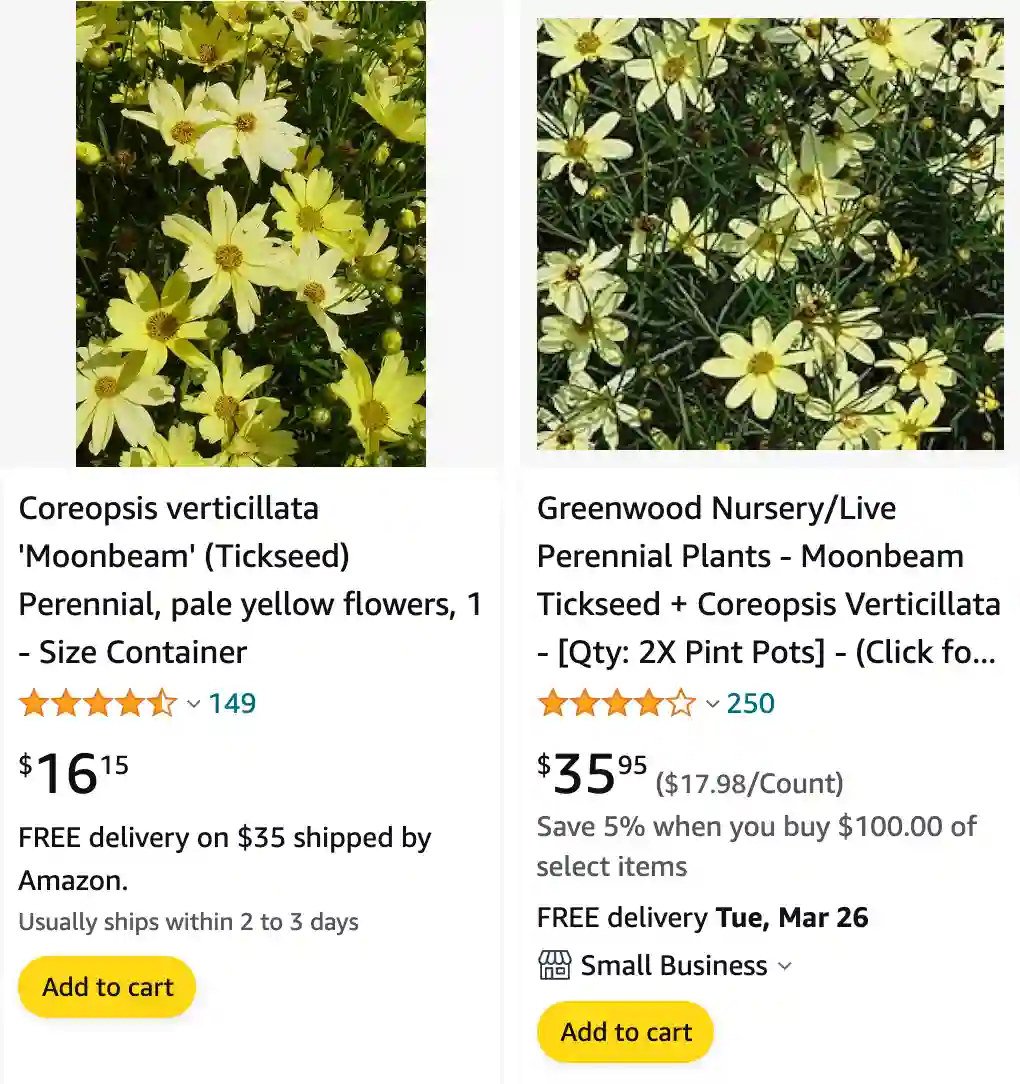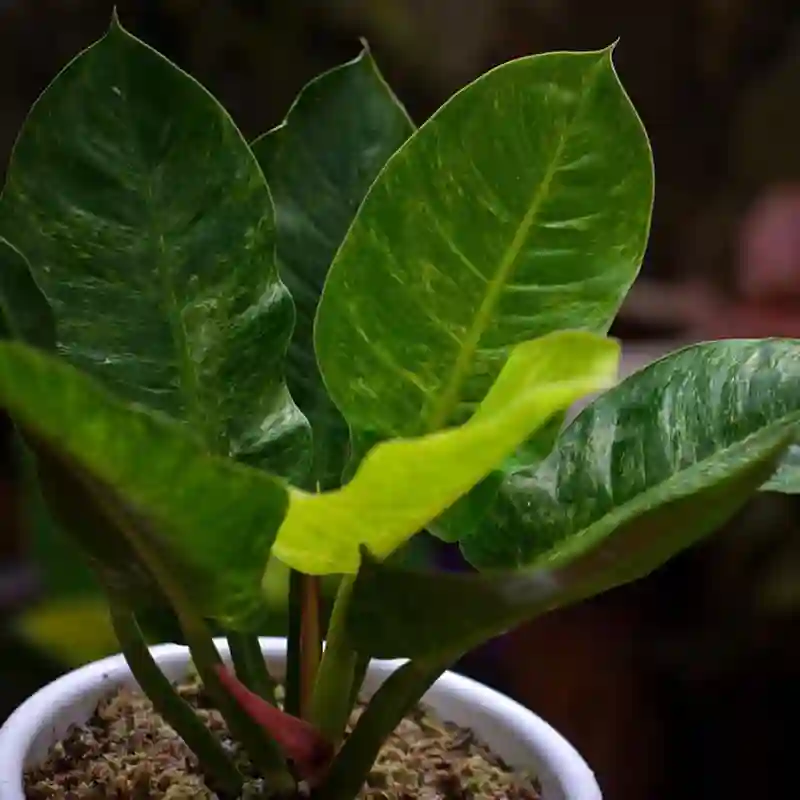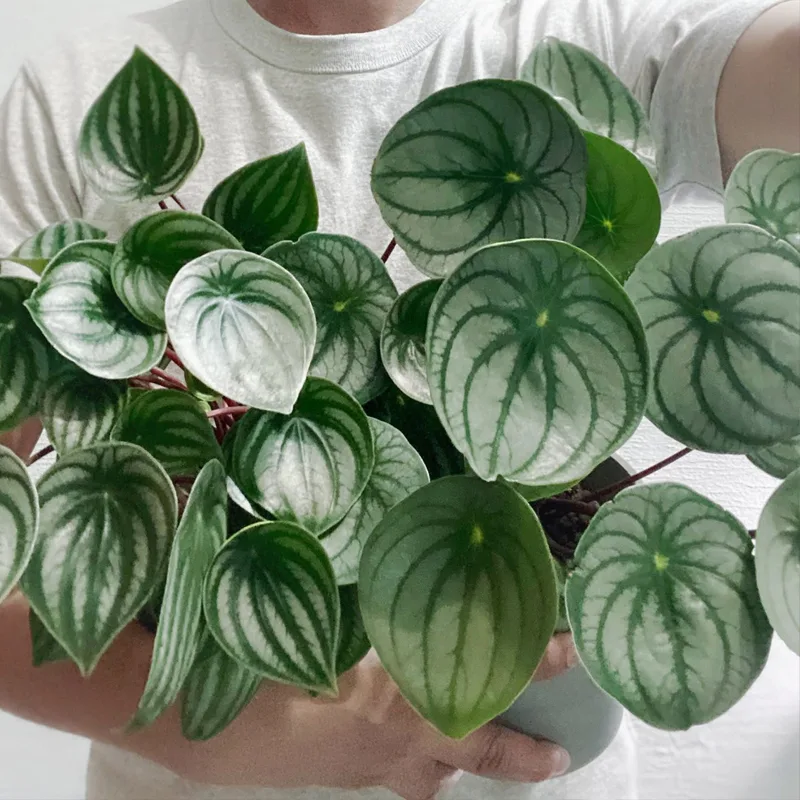
Coreopsis Creme Brulee vs Moonbeam
Coreopsis Creme Brulee adds a warm, buttery glow to my garden beds, complementing other vibrant blooms with its soft, creamy yellow petals that seem to glow in the sunlight.
Coreopsis Moonbeam, on the other hand, has been a reliable performer in my garden, carpeting the landscape with its delicate, fern-like foliage and abundant pale yellow flowers that sway gently in the breeze.
39 Species in Genus Coreopsis
Coreopsis Moonbeam vs Zagreb
Coreopsis Zagreb brings a burst of golden color and a compact growth habit, making it perfect for edging or containers, though I find it needs a bit more attention to maintain its tidy appearance compared to the effortless charm of Moonbeam.
Does moonbeam coreopsis spread?
Moonbeam coreopsis is a delightful perennial that tends to spread moderately. In my experience, it doesn’t aggressively take over the garden like some other plants might, but it does gradually fill in the space it’s given, creating a lovely, natural-looking drift of delicate yellow blooms. I’ve found that it’s quite easy to control its spread by simply dividing the plants every few years or so, which also helps rejuvenate them and keeps them healthy.
How to propagate coreopsis moonbeam?
To propagate moonbeam coreopsis, I’ve had success using a few different methods. One way is to divide established clumps in the spring or fall, making sure each division has both roots and shoots. Another method is to take softwood cuttings in the spring and root them in a mixture of perlite and peat moss. Both methods have yielded new plants for me relatively easily, though division tends to be more reliable.
How to prune moonbeam coreopsis?
Pruning moonbeam coreopsis is a straightforward task that I typically do in early spring or late fall. I simply trim back any dead or spent foliage to tidy up the plant and encourage fresh growth. I’ve found that this minimal pruning helps maintain a neat appearance without sacrificing the natural shape and charm of the plant.
Is moonbeam coreopsis deer resistant?
Moonbeam coreopsis is indeed deer resistant, which is one of the reasons I love it so much. In my garden, where deer are frequent visitors, I’ve noticed that they tend to leave my moonbeam coreopsis alone while nibbling on other nearby plants. It’s a relief to have a beautiful flower like this that doesn’t require constant protection from browsing wildlife.
When does moonbeam coreopsis bloom?
The delicate, lemon-yellow flowers of moonbeam coreopsis typically bloom from early summer to fall in my garden, providing a long-lasting display of color. I always look forward to their cheerful blooms, which brighten up the garden during the hottest months of the year. Their extended blooming period also makes them a valuable addition to any garden, providing continuous interest throughout the growing season.
When to cut back moonbeam coreopsis?
I usually cut back my moonbeam coreopsis in late fall or early spring, once the foliage has died back. I trim the plant down to a few inches above the ground, removing any dead or unsightly growth to tidy up the garden bed. This helps promote healthy new growth and prevents the plant from becoming too leggy or overcrowded.
How to deadhead moonbeam coreopsis?
Deadheading moonbeam coreopsis is a simple task that I incorporate into my regular garden maintenance routine. Throughout the blooming season, I regularly remove spent flowers by pinching them off with my fingers or using scissors. This not only keeps the plant looking tidy but also encourages it to produce more blooms, prolonging the flowering period and enhancing its overall appearance.
Is moonbeam coreopsis a perennial?
Yes, moonbeam coreopsis is a perennial plant, which means it comes back year after year in my garden. I appreciate its reliability and low-maintenance nature, as it requires minimal care once established. Its long lifespan and ability to thrive in a variety of conditions make it a valuable addition to any perennial border or flower bed.
What can i plant with moonbeam coreopsis?
Moonbeam coreopsis pairs beautifully with a variety of other sun-loving perennials and annuals in my garden. I like to plant it alongside other low-maintenance, drought-tolerant plants like lavender, salvia, and sedum, which complement its delicate foliage and bright blooms. Additionally, its airy growth habit makes it an excellent filler plant among taller, more substantial perennials like coneflowers and black-eyed Susans.
Where to buy moonbeam coreopsis?
In my experience, moonbeam coreopsis is readily available at most nurseries and garden centers that carry perennial plants. However, if you’re having trouble finding it locally, there are also many online retailers that offer a wide selection of perennial flowers, including moonbeam coreopsis. I’ve purchased plants from both local nurseries and online sources with success, so it ultimately comes down to personal preference and convenience.
Can you plant coreopsis moonbeam by water?
While it’s possible to propagate moonbeam coreopsis by division or cuttings, I haven’t personally tried planting it directly in water. In my experience, it’s been easier and more reliable to propagate it using traditional methods like division or cuttings, which have consistently yielded healthy new plants. However, experimenting with different propagation techniques can be a fun and educational experience for gardeners who enjoy learning about plant propagation.
How far do you space coreopsis moonbeam?
When spacing out my moonbeam coreopsis plants, I typically allow about 18 to 24 inches between each plant. This gives them enough room to spread and fill in the space without overcrowding each other. However, if you prefer a denser look or want quicker coverage, you can space them a bit closer together, but be mindful that they may need more frequent division to prevent overcrowding in the long run.
If i die, water my plants!



